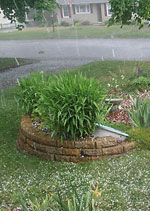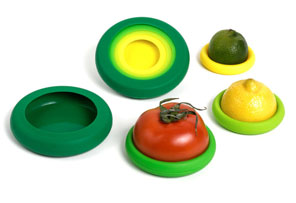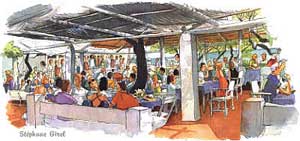 My husband Dave always seems to be ahead of the cool gadget curve,
making sure we're the first kids on our block to have the latest and
greatest tech toys. We've had our Wii for years, stood in line the
first week for the iPhone (him not me), sold our regular laptop to
upgrade to the MacBook Air (worth every penny) and are still jamming
away a year later on Rock Band when most people have never even played
the game. I couldn't imagine what he was going to pull out of his
Christmas stocking this year. Thanks to the generosity of his boss, it
was a Kindle. For those of you who shop on Amazon – which would be almost everyone
with an Internet connection on the planet – the Kindle is not exactly
new, but it sure is hard to get your hands on, which is a bit of a
surprise considering how expensive it is.
My husband Dave always seems to be ahead of the cool gadget curve,
making sure we're the first kids on our block to have the latest and
greatest tech toys. We've had our Wii for years, stood in line the
first week for the iPhone (him not me), sold our regular laptop to
upgrade to the MacBook Air (worth every penny) and are still jamming
away a year later on Rock Band when most people have never even played
the game. I couldn't imagine what he was going to pull out of his
Christmas stocking this year. Thanks to the generosity of his boss, it
was a Kindle. For those of you who shop on Amazon – which would be almost everyone
with an Internet connection on the planet – the Kindle is not exactly
new, but it sure is hard to get your hands on, which is a bit of a
surprise considering how expensive it is.
I certainly wasn't going to pay $359 for this "toy." As an avid book reader who buys 30-40 books a year, I'd make my money back pretty quickly, considering the regular cost of new books. Of course, to actually read anything on it, you have to pay more, around $8-10 per download, which is about half the price of most hardcovers and over time seems like a good deal. Ultimately, my decision to not jump on this bandwagon was all about the experience. Sure, the "books" are cheaper and kept all in one place (you can switch from book to book at the click of a button and the device even keeps your place for you, which is nice), but what about the physicality of watching the story unfold as you turn the page? Of the feel of the paper beneath your fingertips? Of getting the latest book by your favorite author right off the press?

 So we had a hail storm yesterday.
So we had a hail storm yesterday.
 FOOD HUGGERS
FOOD HUGGERS Who said laundry can’t be fun? LooHoo Wool Dryer Balls are colorful, reusable dryer balls that reduce drying time (by 25 percent) and soften laundry naturally! LooHoos lift and separate clothes creating a constant motion that allows more air to circulate around your wet laundry so it dries faster. Made of lanolin-rich wool, about the size of a baseball, these dryer balls can be used for years and the hues will never transfer onto your clothes. The wool fibers absorb static cling, and an added bonus, wool absorbs odors too… so no more stinky socks!
Who said laundry can’t be fun? LooHoo Wool Dryer Balls are colorful, reusable dryer balls that reduce drying time (by 25 percent) and soften laundry naturally! LooHoos lift and separate clothes creating a constant motion that allows more air to circulate around your wet laundry so it dries faster. Made of lanolin-rich wool, about the size of a baseball, these dryer balls can be used for years and the hues will never transfer onto your clothes. The wool fibers absorb static cling, and an added bonus, wool absorbs odors too… so no more stinky socks! I’ve
never actually studied flower arranging... I’ve kind of learned it as
I’ve gone along, over the course of about 25 years... For me it’s what
painting is for many other people...a way of relaxing, a way of
listening to programs on the radio or to music without fidgeting, a way
of showing affection to people I care about.., a way of centering
myself...especially for me if it involves certain fragrances.... roses,
stock, freesia, lily of the valley, peaches, nectarines, honeysuckle.
I’ve
never actually studied flower arranging... I’ve kind of learned it as
I’ve gone along, over the course of about 25 years... For me it’s what
painting is for many other people...a way of relaxing, a way of
listening to programs on the radio or to music without fidgeting, a way
of showing affection to people I care about.., a way of centering
myself...especially for me if it involves certain fragrances.... roses,
stock, freesia, lily of the valley, peaches, nectarines, honeysuckle.
 Around 6 years ago, our family took a trip to France. Our friends
have a house in Ramtuelle, a Medieval city built in a circle
overlooking the sparkling Mediterranean. Honest, it does sparkle. We
frolicked on Pamelonne Beach, made famous by the production company
filming And God Created Woman with Brigitte Bardot and we ate at Club
Cinquante Cinque (55).
Around 6 years ago, our family took a trip to France. Our friends
have a house in Ramtuelle, a Medieval city built in a circle
overlooking the sparkling Mediterranean. Honest, it does sparkle. We
frolicked on Pamelonne Beach, made famous by the production company
filming And God Created Woman with Brigitte Bardot and we ate at Club
Cinquante Cinque (55). 